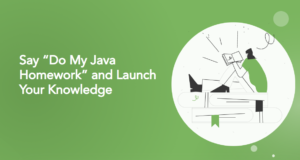Since past 22 years, Java programming is serving developers with varieties of packages and APIs to develop real-world applications. Whether it is about gaming, web development or advanced enterprise applications – Java will assist you in several ways.
This advancement gets pace after the introduction of Enterprise Java Bean (EJB) by IBM in 1997. The main advantage was that most of the common issues faced by developers can be handled automatically directing them towards a lean development environment. Later this framework was passed to Sun Microsystem in 1999 delivering 1.0 version of it.
Now, let’s explore the role of EJB in modern development. Before moving forward, you need to have a basic understanding of the Java programming language. A Java Certification Course will be very helpful if you are a beginner in this development field. Thus, you will have a basic to an advanced level understanding of all the development phases involved in this journey.
What is enterprise java bean?
The enterprise bean is a server-side component incorporated with the business logic of an application. With EJB, it has become easy to develop the scalable, secure and robust distributed application. The business logic will help a developer to fulfil the main objective of developing the application.
Let’s suppose you are developing an order management application for a business. You need to call business logic methods such as Product details, order, etc., which distinguish the whole code into a separated logic for performing a task.
Thus, on executing these methods, a client can manage order independently.
EJB application is best for distributes application development and management.
Where to execute an EJB application?
For executing your written EJB code, you need to an application server which sometimes called an EJB container. It can be Glassfish, Weblogic, Websphere etc. It handles tasks like lifecycle management, object pooling, transaction management, security etc.
The EJB model is more like component object model of Microsoft.
What is the type of Enterprise Java Bean?
The EJB avails two types:
- Session Bean
- Entity Bean
- Message-driven Bean
What is Session Bean?
A session bean doesn’t manage the state of a client among various method calls. These things are just limited to the extraordinary features of the ongoing technology where things are much more thankful to our own clients rather than the visualization. These are the most effective modules among all.
The session beans methods are invoked by a user to access an application over the server.
It performs the main logic inside the server to reduce a user’s effort by providing the key business details.
It is not shared as a session bean can manage a single user at a time. Also, it is not persistent in accordance with saving the details in a database. Once a session is terminated, the client is no longer a part of it.
A session bean comprised of two types:
1) Stateless session beans
2) Stateful session beans
Stateful Session Beans:
The state tells about the value of the instance variable. A stateful session bean is an object which presents the business logic.
It manages data or you can say the conversation state among various method call is managed by it. Stateful session beans offer Stateful, PostConstruct, PrePassivate, PreActivate and PreDestroy like annotations.
Stateless Session Beans:
A stateless bean represents business logic. It doesn’t deal with any data or you can say state. It assists with all the incoming requests coming to the EJB pool.
Only a single user can access it at a single time. The incoming requests are passed to the multiple instances in case of concurrency. It contains the annotations like PostConstruct, PreDestroy, and Stateless.
What is a message-driven bean (MDB)?
An MDB allows enterprise application to operate the messages in an asynchronous manner. It is more like a JMS listener which processes the JMS messages rather than events. MDB can deal with various kinds of messages from a client, EE web components or any other enterprise bean.
The specification of an MDB is:
- It collects message from a topic or queue.
- It retains no information or data state for a particular client.
- All of its instances are equal. An EJB container can assign a message to any of its instances. The EJB container can process all the message streams concurrently by keeping them in a pool.
- A single MDB can deal with multiple users messages.
What is an entity bean?
An entity bean is a server-side component of EJB which keeps the persistent information in the database. Generally, an entity bean has two types:
- Bean-managed persistence (BMP),
- Container-managed persistence (CMP).
Now, you have a clear picture of enterprise java beans in your mind. It reduces the complexities like vast development, distributed application development etc. With EJB, achieving system level authentication becomes easier so that you can develop highly secure applications.
 Learn Java Java Tutoring is a resource blog on java focused mostly on beginners to learn Java in the simplest way without much effort you can access unlimited programs, interview questions, examples
Learn Java Java Tutoring is a resource blog on java focused mostly on beginners to learn Java in the simplest way without much effort you can access unlimited programs, interview questions, examples
